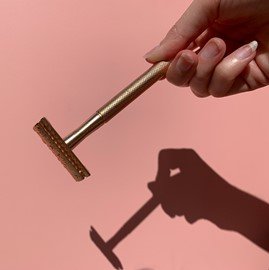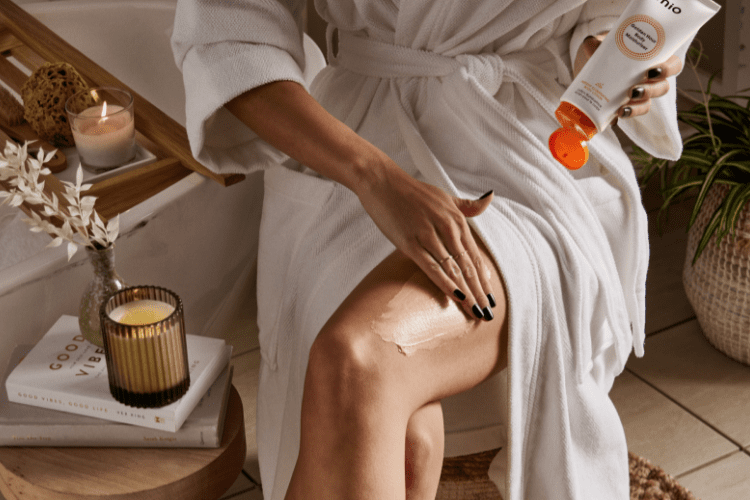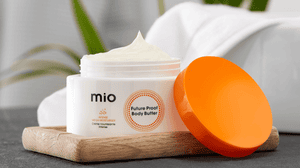You may have been tempted to scroll past this article. We agree, leg-shaving is not a winter activity. Having said that, you can’t hide behind those woollen tights forever, no matter what denier they may be. Spring is just around the corner and with that, we must reintroduce the hassle that is, leg shaving. This raises the question- does shaving really have to be such a hindrance to daily life? In fact, the common shaving mistakes that lead to ingrown hairs and irritation are easily avoidable. Read on to discover how to shave your legs, properly.

What do I Need to Shave my Legs?
When it comes to shaving, the less care you put into the routine, the more effort the process involves. If your shaving ritual consists of a few strokes of a discoloured razor against your legs, you’ll most likely find yourself having to do this on repeat, avoiding bumps and irritated areas, constantly tackling stubble that won’t budge. This is because apart from the obvious, there are a few other things you need to shave your legs in order to achieve that silky-smooth feel.
- Dry brush your skin with a Body Brush to get rid of dead skin that clogs up your razor.
- Exfoliate with an Exfoliating Body Scrub for a smooth and hydrated base and to help get rid of shaving bumps.
- Pick a four/five-blade razor with a moisture indicator strip to let you know when it’s time for a blade change.
- Apply a Calming Body Oil to lock in moisture after your shower and cool your legs.
- Follow up with a Natural Body Butter for a soft and smooth finish.
How Often Should You Shave your Legs?
At this point, you may be having doubts. What’s the likelihood of transforming a quick, daily task into what appears to be an hour-long spa ritual? Well, once you know how to shave your legs properly and begin to put an effort into the process, the number of times you find yourself reaching for the razor will decrease. Everybody differs in respect to how quickly, dark, and thick the hairs grow back so how often you shave your legs is completely up to you. However, following these steps and avoiding common shaving mistakes will ensure that the hair follicle is cleanly cut as close to the root as possible, blessing you with as much smooth-leg time as possible.

What’s more, many people opt for a morning shave, with the intention of having smooth legs for the rest of the day. However, not only does this put a huge strain on your morning rush, it’s not entirely effective. During the night, our legs warm up and swell slightly as we sleep. This means that if you shaved that evening, any hairs you may have skimmed over go back into their follicles, giving you smoother legs the following day. However, this over-night swelling that occurs also means that if you do decide to shave in the mornings, you’re not getting as close to the root and your legs will feel deceptively smoother than they actually are. A few hours later, once the swelling has subsided, the stubble is revealed.
Which Direction Should You Shave for a Closer Cut?
If you’re wondering which direction to shave for the closest cut, the answer is upwards, so against the direction of hair growth. However, if you have curly hair and are more concerned with razor bumps and ingrown hairs, it’s advised to shave the way your hair grows, so from the knee down to the ankle. Again, it depends on your hair type. After a few strokes in the direction that suits you, make sure to rinse your blade from any dead skin or soap. A clogged razor is what causes razor burn.

Another tip for getting as close of a shave as possible is to wait until your legs are thoroughly wet. The easiest multitasking you’ll do is let the warm steam open up your follicles and soften the hairs to prep while you shampoo and condition.
How to Get Rid of Shaving Bumps
Shaving bumps can be caused by ingrown hairs and lead the skin to feel inflamed, itchy and irritated. The best way to rid of shaving bumps is by exfoliating- this is where dry brushing and body scrubbing comes in. The combination of the two is the most effective way to shed any dry, tough skin that can end up trapping hairs. We always want to be working with a smooth, clean base.
To soothe the bumps, put on a cold compress followed by a calming body oil to relieve any irritation. Once the pores have closed up, use a body butter to nourish and moisturise the skin. It’s best to avoid shaving the area until the bumps have completely gone down. Once they have, try again- this time with the knowledge of how to shave properly.
The moral of the story? Shaving your legs is not a spur-of-the-moment activity and yes, that hint of rust matters.






